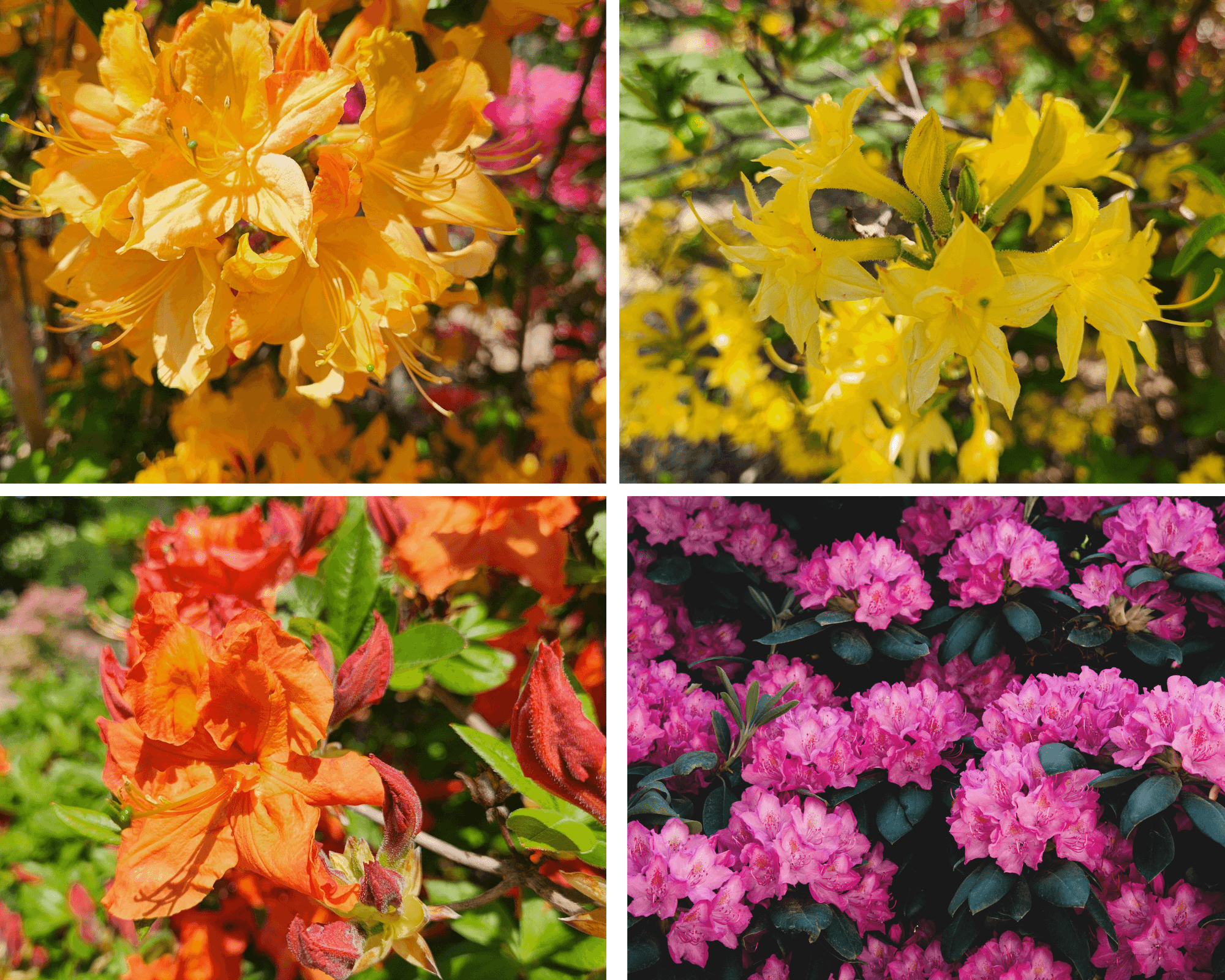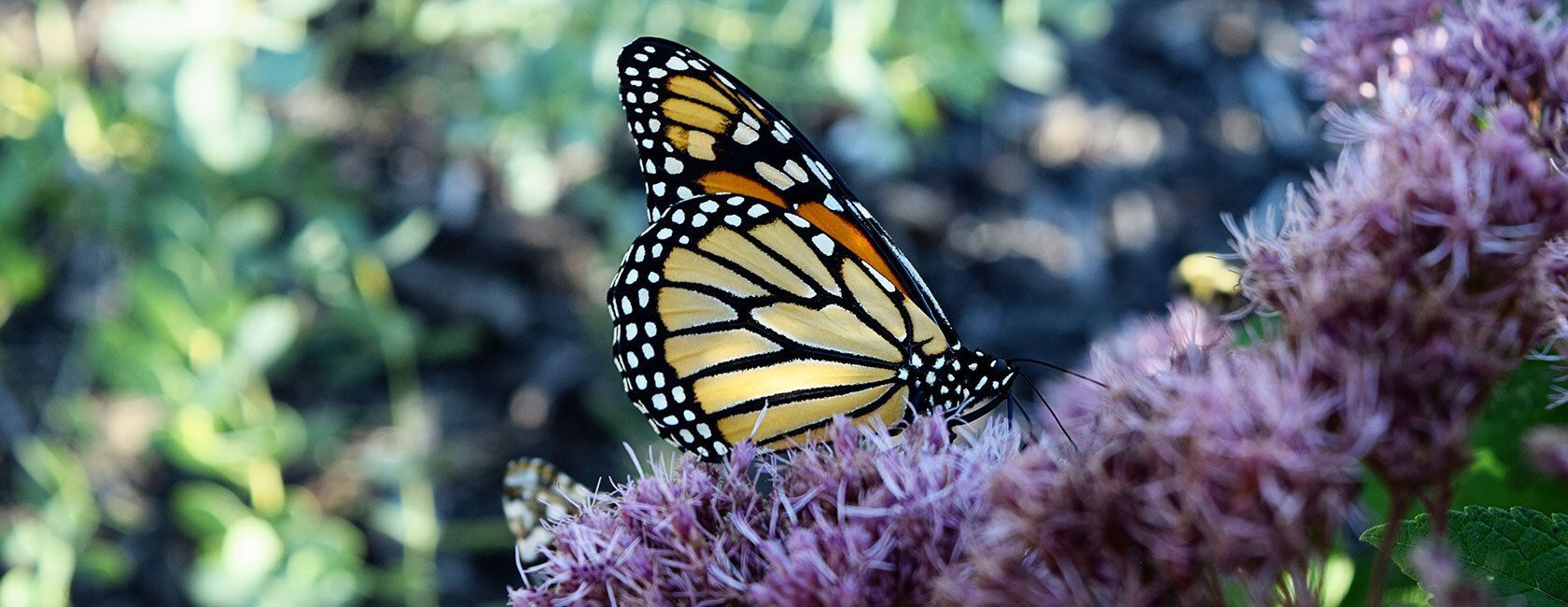
Photo: Three examples of Northern lights azalea on UNL's East Campus and a rhododendron shrub (lower right).
Every winter, I catch a glimpse of an evergreen shrub tucked near the side of a house, standing out from the bare twigs and branches of other dormant plants. Come mid-spring, its green foliage gives way to a profusion of pink or lavender blooms, cementing my curiosity: What is that plant? The answer, I eventually learned—after inheriting one at my new house—is rhododendron, of course!
Rhododendrons belong to the Ericaceae, or heath family, which also includes cranberries, blueberries and mountain laurel. There are over 800 species of rhododendrons found worldwide, with many originating in the southeastern United States. However, none are native to Nebraska. Rhododendrons are commonly divided into two distinct groups: true rhododendrons and azaleas, which helps categorize their diversity.
True Rhododendrons
True rhododendrons are mostly evergreen, holding onto their leathery leaves all winter. They tend to grow larger than azaleas, with denser foliage and a bushier habit. Their showy, bell-shaped flowers typically have 10 or more stamens—if you're inclined to count them.
Cold-hardy cultivars have been bred to survive our winters, including hybrids created by crossing R. carolinianum and R. dauricum. This cross produced the PJM Rhododendron, named after breeder Peter J. Mezitt. I have one of these in my yard, planted in part sun on the north side of the house, protected from the north wind by a tree and an adjacent fence. It produces a vibrant display of magenta flowers every year in late April.
Azaleas
Azaleas are generally smaller, deciduous shrubs that predictably lose their leaves in winter. Their funnel-shaped flowers have five stamens, and the twigs are usually hairy. Azaleas are often more heat-tolerant and can handle slightly sunnier, drier conditions than rhododendrons.
On UNL's East Campus, a group of azaleas in the Maxwell Arboretum thrives in full sun, surrounded mostly by turf. Each spring, they become a go-to selfie spot for students and visitors, exploding into tantalizing rainbow hues reminiscent of Joseph’s Technicolor Dreamcoat. These azaleas belong to the Northern Lights series, developed by the University of Minnesota to withstand cold climates.
So... Are Azaleas Rhododendrons?
Technically, yes. All azaleas belong to the genus Rhododendron, which makes them rhododendrons by classification. But it's helpful to think of them as a subcategory within the genus. There are enough botanical differences to treat them as a separate group in practice.
So, while you wouldn’t be wrong to call an azalea a rhododendron, you would be mistaken to refer to the evergreen leafy shrub you spot next winter as an azalea.


